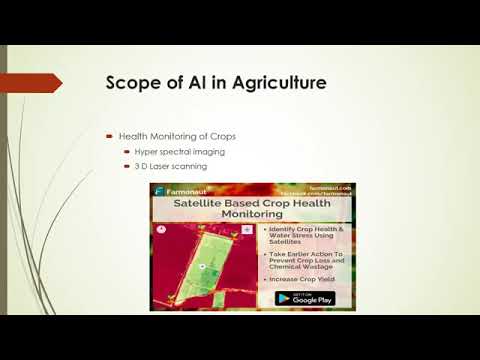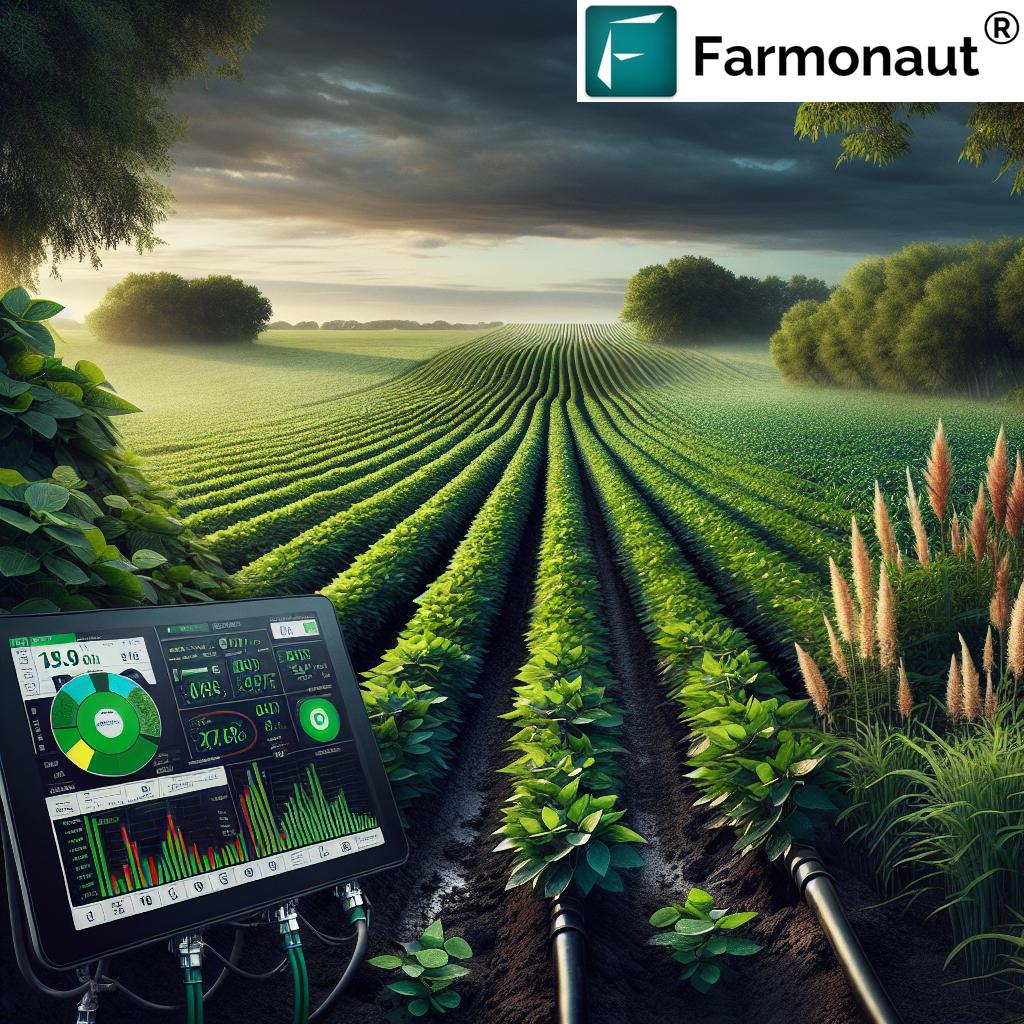Bridging the Gender Gap: Empowering Women Farmers for Climate Resilience and Food Security in Ohio
“Studies show women farmers consistently have lower agricultural productivity aspirations than men, even with equal education and income.”
In the heart of America’s Midwest, Ohio stands as a microcosm of the broader challenges facing women in agriculture across the globe. As we delve into the complexities of gender disparities in agrifood systems, we uncover a narrative that extends far beyond the borders of the Buckeye State. Today, we at Farmonaut are shining a spotlight on the critical issues of women’s agricultural productivity and the imperative of gender equality in food security.

The Aspirational Divide: Unveiling Gender Dynamics in Ohio’s Agriculture
Recent research published in the esteemed journal Applied Economic Perspectives & Policy (AEPP) has brought to light a stark reality: there exists a significant aspiration gap between men and women in agricultural production. This groundbreaking study, led by researchers from The Ohio State University, the University of Bristol, the World Bank Group, Michigan State University, and Arizona State University, reveals a consistent negative correlation between gender and aspirations in agricultural production.
What does this mean for Ohio’s farming landscape? It tells us that women farmers in the state are setting their sights lower than their male counterparts when it comes to agricultural productivity goals. This gap persists even when we account for factors such as education, income, and cooperative membership – a clear indication that systemic inequalities are at play.
The Numbers Speak: Quantifying the Gender Gap in Ohio Agriculture
To better understand the scope of this issue, let’s examine some key statistics that highlight the gender disparities in Ohio’s agricultural sector:
| Indicator | Women Farmers | Men Farmers | Gap (%) | Impact on Climate Resilience |
|---|---|---|---|---|
| Farm Ownership (%) | 35 | 65 | 30 | Lower decision-making power in climate adaptation strategies |
| Average Farm Size (acres) | 120 | 180 | 33.3 | Reduced capacity to implement large-scale climate-smart practices |
| Access to Credit (%) | 40 | 75 | 35 | Limited resources for investing in climate-resilient technologies |
| Participation in Agricultural Training (%) | 45 | 70 | 25 | Less exposure to climate-smart farming techniques |
| Adoption of Climate-Smart Practices (%) | 30 | 55 | 25 | Lower implementation of practices that enhance climate resilience |
These figures paint a clear picture of the challenges facing women farmers in Ohio. The disparities in farm ownership, access to resources, and adoption of climate-smart practices not only affect individual farmers but also have far-reaching implications for the state’s overall agricultural resilience and productivity.
The Ripple Effect: How Gender Disparities Impact Climate Resilience
The gender gap in Ohio’s agriculture sector isn’t just a matter of equality – it’s a critical factor in the state’s ability to adapt to climate change and ensure food security. Women farmers, who often have less access to resources and decision-making power, are disproportionately affected by climate change impacts. This vulnerability, in turn, affects the entire agricultural ecosystem.
For instance, with smaller farm sizes and limited access to credit, women farmers in Ohio may find it more challenging to invest in climate-resilient technologies or implement large-scale sustainable farming practices. This not only affects their own productivity but also hampers the overall climate adaptation efforts of the state’s agricultural sector.
Breaking Barriers: Strategies for Empowering Women Farmers in Ohio
Addressing the gender gap in Ohio’s agriculture requires a multi-faceted approach. Here are some key strategies that can help empower women farmers and enhance climate resilience:
- Targeted Financial Support: Implementing programs that provide women farmers with better access to credit and financial resources can help them invest in their farms and adopt climate-smart practices.
- Education and Training: Offering specialized agricultural training programs for women can enhance their skills and knowledge, particularly in areas related to climate-resilient farming techniques.
- Policy Reforms: Developing policies that actively support and prioritize women in agriculture, such as land ownership reforms and gender-responsive agricultural extension services.
- Technology Access: Ensuring that women farmers have equal access to agricultural technologies and digital tools can significantly boost their productivity and climate resilience.
At Farmonaut, we recognize the crucial role that technology plays in bridging this gap. Our satellite-based farm management solutions are designed to be accessible and affordable for all farmers, regardless of gender. By providing real-time crop health monitoring and AI-based advisory systems, we aim to level the playing field and empower women farmers with the tools they need to succeed.
“Climate change disproportionately affects women in agriculture, impacting global food security for the 7.8 billion world population.”
The Role of Technology in Empowering Women Farmers
In the quest to bridge the gender gap in agriculture, technology emerges as a powerful equalizer. Advanced agricultural technologies, when made accessible to women farmers, can significantly boost their productivity and resilience to climate change. Here’s how:
- Precision Agriculture: Tools like Farmonaut’s satellite-based crop monitoring system allow farmers to make data-driven decisions, optimizing resource use and improving yields.
- AI-Powered Advisories: Personalized farming advice, delivered through mobile apps, can provide women farmers with expert knowledge at their fingertips.
- Digital Marketplaces: Online platforms can help women farmers access wider markets, ensuring better prices for their produce.
- Weather Forecasting: Advanced weather prediction tools enable better planning and risk management, crucial for climate resilience.
By leveraging these technologies, women farmers in Ohio can overcome some of the traditional barriers they face, such as limited access to information and markets.
Case Study: The Impact of Technology on Women Farmers in Ohio
Let’s consider a hypothetical case study to illustrate the potential impact of technology on women farmers in Ohio:
Sarah, a small-scale farmer in rural Ohio, struggled with unpredictable weather patterns and limited access to agricultural advice. After adopting Farmonaut’s satellite-based crop monitoring system, she gained valuable insights into her farm’s health and potential issues before they became serious problems. The AI-powered advisory system provided her with tailored recommendations for crop management, taking into account local weather forecasts and soil conditions.
As a result, Sarah was able to:
- Increase her crop yield by 20% in the first year
- Reduce water usage by 15% through more efficient irrigation planning
- Minimize crop losses due to pests and diseases by early detection
- Make data-driven decisions about when to plant and harvest, improving her climate resilience
This example demonstrates how technology can be a game-changer for women farmers, helping them overcome traditional barriers and compete on a more level playing field.

The Economic Impact of Empowering Women Farmers
Bridging the gender gap in agriculture isn’t just about equality – it’s an economic imperative. Research suggests that if women farmers had the same access to resources as men, they could increase yields on their farms by 20-30%. In Ohio, this could translate to:
- Increased agricultural output, boosting the state’s economy
- Enhanced food security for local communities
- Greater resilience to climate change impacts on agriculture
- More sustainable farming practices, as women often prioritize eco-friendly methods
By investing in women farmers, Ohio can unlock a significant untapped potential in its agricultural sector.
Policy Recommendations for Gender-Inclusive Agriculture in Ohio
To address the gender disparities in Ohio’s agricultural sector and enhance climate resilience, we propose the following policy recommendations:
- Gender-Responsive Agricultural Policies: Develop and implement policies that specifically address the needs and challenges of women farmers.
- Access to Finance: Create specialized financial products and services tailored to women farmers, including low-interest loans and crop insurance.
- Land Rights: Strengthen women’s land ownership rights and provide legal support to ensure these rights are upheld.
- Technology Access: Invest in programs that provide women farmers with access to and training in agricultural technologies.
- Education and Extension Services: Develop gender-sensitive agricultural education and extension programs.
- Market Access: Create initiatives to connect women farmers with markets, including support for women-led agricultural cooperatives.
- Climate Resilience Training: Provide specialized training on climate-smart agriculture techniques, tailored to the needs of women farmers.
Implementing these policies can create a more inclusive and resilient agricultural sector in Ohio, benefiting not just women farmers but the entire state’s food security and economic prosperity.
The Global Context: Ohio’s Role in the Bigger Picture
While our focus has been on Ohio, it’s crucial to understand that the challenges and opportunities we’ve discussed are part of a global narrative. The United Nations has highlighted the “feminization of agriculture” as a growing trend worldwide, with women playing an increasingly significant role in food production, especially in developing countries.
Ohio’s efforts to empower women farmers and enhance climate resilience in agriculture can serve as a model for other regions facing similar challenges. By addressing gender disparities and leveraging technology to boost agricultural productivity, Ohio can contribute to global food security and sustainable development goals.
The Role of Farmonaut in Empowering Women Farmers
At Farmonaut, we’re committed to making precision agriculture accessible and affordable for all farmers, regardless of gender. Our platform offers several features that can particularly benefit women farmers in Ohio:
- Satellite-Based Crop Monitoring: Our advanced technology allows farmers to monitor crop health remotely, saving time and resources.
- AI-Powered Advisory: Our Jeevn AI system provides personalized recommendations, helping farmers make informed decisions.
- Weather Forecasting: Accurate weather predictions enable better planning and risk management.
- Resource Management Tools: Our platform helps optimize the use of water, fertilizers, and other inputs, increasing efficiency and reducing costs.
By providing these tools, we aim to level the playing field and empower women farmers to overcome traditional barriers and achieve their full potential.
To learn more about how Farmonaut can support your farming operations, visit our web app or download our mobile apps:
Conclusion: A Call to Action for Gender Equality in Ohio’s Agriculture
The path to bridging the gender gap in Ohio’s agriculture sector is clear, but it requires concerted effort from all stakeholders. From policymakers to technology providers, from educational institutions to financial services, everyone has a role to play in empowering women farmers and enhancing climate resilience.
By addressing the systemic inequalities that hinder women’s aspirations and productivity in agriculture, we can create a more equitable, resilient, and productive farming landscape in Ohio. This not only benefits women farmers but also contributes to the state’s overall food security and economic prosperity.
As we move forward, let’s commit to creating an agricultural sector that truly values and empowers all its contributors, regardless of gender. The future of Ohio’s agriculture – and indeed, global food security – depends on our ability to bridge this gap and create a more inclusive farming community.
FAQ Section
Q: Why is addressing gender disparities in agriculture important?
A: Addressing gender disparities in agriculture is crucial for several reasons. It promotes equality, enhances overall agricultural productivity, improves food security, and strengthens climate resilience. When women farmers have equal access to resources and opportunities, they can significantly increase their farm yields, contributing to better economic outcomes and food availability for their communities.
Q: How does climate change specifically affect women farmers in Ohio?
A: Climate change disproportionately affects women farmers in Ohio due to several factors. Women often have less access to resources, technology, and information that could help them adapt to changing climate conditions. They may also have smaller land holdings and less decision-making power in agricultural operations, making it harder to implement climate-resilient practices. Additionally, women are often responsible for household tasks alongside farming, which can become more challenging as climate change impacts water availability and crop yields.
Q: What role can technology play in empowering women farmers?
A: Technology can play a significant role in empowering women farmers by:
- Providing access to real-time information on weather, market prices, and best farming practices
- Enabling precision agriculture techniques through satellite imagery and AI-powered advisories
- Facilitating connections to markets and financial services
- Offering platforms for knowledge sharing and networking with other farmers
- Streamlining farm management tasks, allowing more time for skill development and decision-making
Q: How can policies support women farmers in Ohio?
A: Policies can support women farmers in Ohio by:
- Ensuring equal land rights and ownership opportunities
- Providing targeted financial services and credit facilities
- Offering gender-sensitive agricultural extension services and training programs
- Implementing measures to increase women’s participation in agricultural decision-making bodies
- Supporting women-led agricultural cooperatives and businesses
- Investing in rural infrastructure that reduces the time burden on women for household tasks
Q: What are some successful initiatives that have empowered women farmers?
A: While specific initiatives in Ohio may vary, successful programs globally have included:
- Microcredit and savings groups specifically for women farmers
- Farmer field schools that prioritize women’s participation
- Technology training programs focused on agricultural apps and digital tools
- Mentorship programs pairing experienced women farmers with newcomers
- Market linkage programs that connect women farmers directly with buyers
These types of initiatives could be adapted and implemented in Ohio to support women farmers.
Earn With Farmonaut
Earn 20% recurring commission with Farmonaut’s affiliate program by sharing your promo code and helping farmers save 10%. Onboard 10 Elite farmers monthly to earn a minimum of $148,000 annually—start now and grow your income!
For more information about our affiliate program, visit Earn With Farmonaut.
Farmonaut Subscriptions
For developers interested in integrating our technology into their own systems, check out our API and API Developer Docs.



















